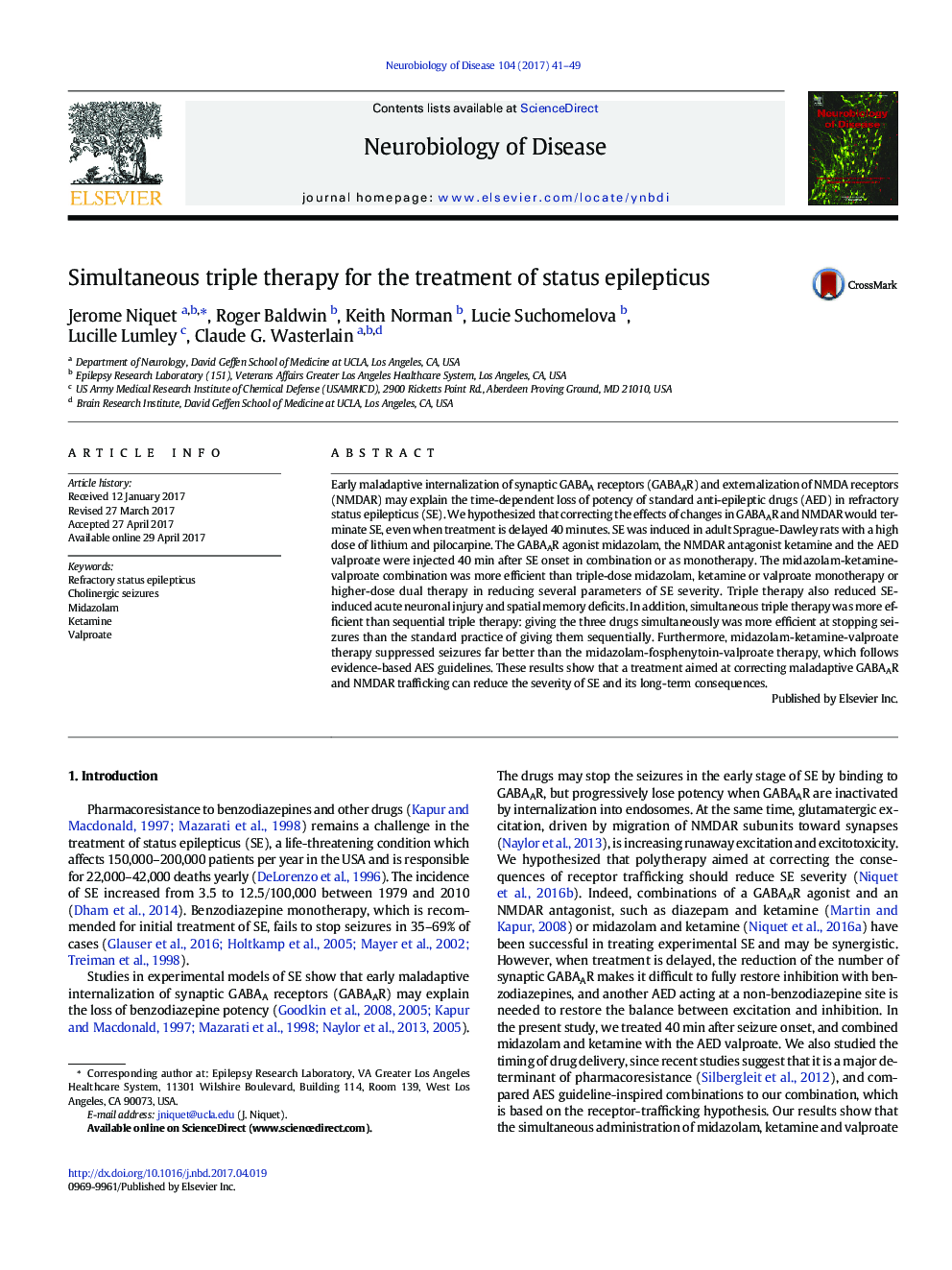| کد مقاله | کد نشریه | سال انتشار | مقاله انگلیسی | نسخه تمام متن |
|---|---|---|---|---|
| 5630571 | 1580617 | 2017 | 9 صفحه PDF | دانلود رایگان |
- Pharmacoresistance in SE may be due in part to GABAA and NMDA receptor trafficking.
- We used combinations of drugs designed to counter these SE-induced changes.
- Midazolam-ketamine-valproate therapy synergistically stopped SE.
- This triple therapy reduced acute neuronal injury and Morris water maze deficits.
- Simultaneous triple therapy was more effective than sequential triple therapy.
Early maladaptive internalization of synaptic GABAA receptors (GABAAR) and externalization of NMDA receptors (NMDAR) may explain the time-dependent loss of potency of standard anti-epileptic drugs (AED) in refractory status epilepticus (SE). We hypothesized that correcting the effects of changes in GABAAR and NMDAR would terminate SE, even when treatment is delayed 40 minutes. SE was induced in adult Sprague-Dawley rats with a high dose of lithium and pilocarpine. The GABAAR agonist midazolam, the NMDAR antagonist ketamine and the AED valproate were injected 40 min after SE onset in combination or as monotherapy. The midazolam-ketamine-valproate combination was more efficient than triple-dose midazolam, ketamine or valproate monotherapy or higher-dose dual therapy in reducing several parameters of SE severity. Triple therapy also reduced SE-induced acute neuronal injury and spatial memory deficits. In addition, simultaneous triple therapy was more efficient than sequential triple therapy: giving the three drugs simultaneously was more efficient at stopping seizures than the standard practice of giving them sequentially. Furthermore, midazolam-ketamine-valproate therapy suppressed seizures far better than the midazolam-fosphenytoin-valproate therapy, which follows evidence-based AES guidelines. These results show that a treatment aimed at correcting maladaptive GABAAR and NMDAR trafficking can reduce the severity of SE and its long-term consequences.
Journal: Neurobiology of Disease - Volume 104, August 2017, Pages 41-49
